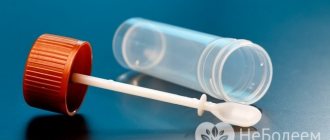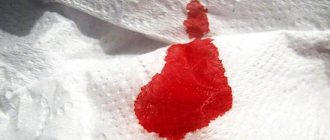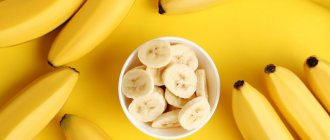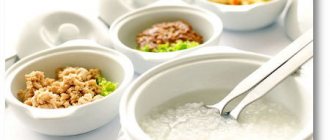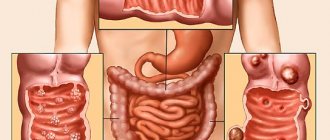Absorption is a function of the digestive system, which is the body's absorption of nutrients in food. The process is ensured by active or passive transport of substances through the wall of the gastrointestinal tract. Absorption occurs over the entire surface of the digestive system, but in some sections it is most active. In particular, the intensity of the process is highest in the large and small intestines.
Absorption of substances in the intestines
The intestine is the main site of nutrient absorption. This function is one of the most important tasks of the body.
Absorption in the small intestine
The small intestine is considered the main region for the absorption of nutrients. In the stomach and duodenum, nutrients are broken down into their simplest components, which are subsequently absorbed in the small intestine.
The following substances are absorbed here:
- Amino acids. Substances are components of protein molecules.
- Carbohydrates. Large carbohydrate molecules (polysaccharides) found in food are broken down into simple molecules - glucose, fructose and other monosaccharides. They pass through the intestinal wall and enter the blood.
- Glycerol and fatty acids. These substances are components of all fats, both animal and vegetable. Their absorption occurs very quickly, since the components easily pass through the intestinal wall. The absorption of cholesterol occurs in the same way.
- Water and minerals. The main site of water absorption is the large intestine, however, active absorption of fluid and essential microelements occurs in the sections of the small intestine.
Absorption in the large intestine
The main products for absorption in the large intestine are:
- Water. Fluid passes freely through the membranes of the cells that make up the wall of the organ. The process proceeds according to the law of osmosis and depends on the concentration of water in the mucous membrane of the large intestine. Thanks to the correct distribution of fluid and salts, water actively enters the body and enters the blood.
- Minerals. One of the most important functions of the large intestine is the absorption of minerals. These can be salts of potassium, calcium, magnesium, sodium and other vital trace elements. Phosphates are also of great importance - derivatives of phosphorus, from which the body synthesizes the main source of energy, ATP.
Be sure to read: Rectal fissure: causes, symptoms and treatment of pathology
Biology at the Lyceum
Digestion in the intestines. Nutrient Absorption
Small intestine
- a section of the gastrointestinal tract lying between the stomach and large intestine. The length of the department is 6 - 7 meters. This is where the final digestion of food and absorption of the nutrients it contains occurs.
Anatomically, the small intestine is divided into the duodenum, jejunum
and
ileum
.
The inner surface of the small intestine has a characteristic relief due to the presence of villi - protrusions
and
crypts - invaginations
of the mucous membrane, increasing its total surface.
These formations are the main structural and functional units of the mucous membrane of the small intestine.
The food gruel that comes here, already processed by saliva and gastric juice, is exposed to intestinal juice
, bile, pancreatic juice. Intestinal juice is secreted by the smallest glands of the intestinal walls. The movement of food masses occurs due to the contraction of the walls of the small intestine.
All loops of the small intestine seem to be suspended on the mesentery
, consisting of two layers of peritoneum, between which blood vessels and nerves pass in the adipose tissue. Along the mesentery, blood and lymphatic vessels reach the intestines and ensure the flow of nutrients into the blood and their transfer to other organs.
Here, the absorption of digestion products into the blood and lymphatic capillaries occurs.
In addition to digestion, absorption and transportation of food masses, the small intestine also performs the functions of immunological defense and hormone secretion.
In the small intestine, there are two types of digestion: cavity and parietal.
Cavity digestion
occurs in the liquid phase
of chyme (food gruel)
and on the surface of food particles.
It occurs under the influence of proteolytic (acting on proteins), amylolytic (acting on carbohydrates) and lipolytic (acting on fats) enzymes entering the cavity of the small intestine. Enzymes are part of pancreatic juice
and intestinal juice. Fats are emulsified by bile produced in the liver.
As a result, large molecular substances (polymers) are hydrolyzed mainly to the stage of oligomers. Their further hydrolysis occurs in the area adjacent to the mucous membrane and directly on it.
Parietal digestion
occurs in the mucus layer between the microvilli of the small intestine and directly on their surface.
Alexander Mikhailovich Ugolev, a Ukrainian scientist-physiologist, was the first to describe the mechanism of parietal digestion.
He found that, in addition to the breakdown of food in the intestinal cavity, it is exposed to the very surface of the mucous membrane of the intestinal wall, covered with outgrowths - microvilli
.
Their number in the small intestine is very large - up to 90 pieces per 1 µm2. The entire collection of microvilli is called the brush border.
.
This structure of the inner surface of the small intestine increases its active surface by 30 - 40 times. Here the most intensive breakdown of polymers and oligomers into monomers occurs under the action of enzymes attached to the membrane, and the absorption of the resulting simple substances into the blood and lymph.
The duodenum is the initial section of the small intestine, 25-30 cm long, which contains enzymes that break down proteins, fats and carbohydrates.
The ducts of the pancreas and liver open into the cavity of the duodenum. The chyme that comes here from the stomach continues to be digested under the influence of digestive juices. Bile, which enters here through the bile duct from the liver, emulsifies fats, facilitating their digestion and absorption.
Through the walls of numerous villi, the products of the breakdown of proteins and carbohydrates enter the blood, and the products of the breakdown of fats enter the lymph.
The liver is the largest gland in the body, located under the diaphragm, in the right hypochondrium, consisting of several lobes. The liver is one of the main organs responsible for regulating the content of metabolites in the blood and the constancy of its composition.
The liver produces bile, which flows through the cystic duct into the duodenum.
The formation of bile in liver cells is continuous, but its release into the intestines begins 5 - 10 minutes after eating.
In the absence of digestion, bile is stored in the gallbladder.
The hepatic lobes consist of small structural units - lobules. There are about one hundred thousand of them in the human liver. The lobule consists of liver cells - hepatocytes
located around the central vein. They form a complex system of walls and ducts through which the bile formed in the lobules enters the bile ducts and is removed from the liver.
Malabsorption in the intestine
In some diseases, the absorption of vital components - carbohydrates, amino acids, constituent elements of fats, vitamins and microelements - may be impaired. Insufficient intake of these substances into the body triggers a cascade of biological reactions that lead to a deterioration in the patient’s condition.
Causes
All causes of malabsorption can be divided into two main groups:
- Acquired disorders. Secondary changes in intestinal absorption are not inherent in the patient's genetic material. They are triggered by some factor that adversely affects the state of the digestive system and leads to disruption of the process of absorption of nutrients.
- Congenital disorders. Such conditions are characterized by a genetically programmed absence of any enzymes that decompose nutrients. So, with lactose intolerance, a person lacks the enzyme that decomposes this substance, which is why it is not absorbed in the body. Such diseases are called fermentopathies.
Secondary causes, in turn, are classified into groups depending on what pathologies provoked digestive disorders. This can be not only damage to the gastrointestinal tract, but also pathologies of other organs:
- gastrogenic disorders – stomach pathologies;
- pancreatogenic causes – diseases of the pancreas;
- enterogenic causes – intestinal damage;
- hepatogenic disorders - causes associated with impaired liver function;
- endocrine dysfunction – changes in the functioning of the thyroid gland;
- Iatrogenic factors are disorders that occur during drug therapy with certain drugs (NSAIDs, cytostatics, antibiotics), as well as after irradiation.
Symptoms
Common symptoms of impaired absorption include:
- diarrhea, change in stool character;
- flatulence;
- heaviness and abdominal cramps that occur after eating;
- increased weakness, fatigue;
- pallor;
- weight loss.
Depending on which substances are not absorbed by the body, the clinical picture of the disease may be supplemented. Thus, with a deficiency of vitamins, visual impairment, skin manifestations and other symptoms of vitamin deficiency appear. Brittle nails and hair, bone pain indicate a lack of calcium. Due to insufficient iron intake, the patient develops anemia. Potassium deficiency can adversely affect heart function. Vitamin K deficiency can lead to an increased tendency to bleed.
Be sure to read:
Gastroduodenitis: how is the pathology manifested and treated?
The general spectrum of disorders depends on the severity of malnutrition in the body and the nature of the causative factor that influenced the development of the disease.
In any case, malabsorption is a serious traumatic factor for the body, adversely affecting its functional activity. Therefore, if this condition is detected, it is necessary to urgently undergo treatment.
In continuation of the topic, be sure to read:
- Causes of bloating and increased gas formation, treatment methods
- Details about the coprogram: preparation, conduct and interpretation of the analysis
- Intestinal diseases: symptoms of pathologies, diagnosis and treatment
- Diseases of the large intestine: symptoms and signs of the disease, treatment
- Malabsorption syndrome: definition and treatment recommendations (diet, medications)
- Irritable bowel syndrome: symptoms and treatments
- Diseases of the small intestine: symptoms and signs of the disease, treatment
- Rectal fissure: causes, symptoms and treatment of pathology
- Rectal cancer: symptoms, stages, treatment and prognosis for life
- Methods for improving digestion and metabolism: foods, drugs, herbs
Absorption disorders
At different age periods, differences in the permeability of intestinal epithelial tissue are noted. In the first days, newborns absorb low molecular weight immune bodies along with colostrum. Then the type of permeability changes, and only the broken down substances are absorbed. With old age, the intensity of V. weakens.
V. is impaired due to previously suffered diseases (dysentery, enteritis, typhoid fever, cholera), poisoning, blood loss, vitamin deficiencies, insufficient gas exchange, insufficiency of the endocrine glands, etc.
The effect of ionizing radiation on the body leads to disruption of V. in the intestines, the severity of which depends on the severity of radiation damage. Absorption disorders in the intestine after irradiation are caused by a violation of neurohumoral regulation, pathomorphol. and cytochemical changes in the gastrointestinal tract. tract, ch. arr. in the small intestine, the mucous membrane of the cut is highly sensitive to the action of ionizing radiation.
Violations in the intestine after irradiation are associated with dystrophic changes in the villi and disruption of the ultrastructure of the epithelium of the irradiated intestine. Changes in the cellular elements of the villi lead to desquamation of the epithelium and shortening of the villi; At the same time, microvilli decrease and change shape, their total number decreases, and damage to the mitochondrial structure is noted. This leads to a weakening of V. processes, and its near-wall phase suffers the most (A. M. Ugolev, 1967).
The main factors leading to intestinal breakdown in both the early and late phases of radiation syndrome are inhibition of enzymatic processes, depolymerization of mucopolysaccharides of the main substance of connective tissue, as well as destruction of mast cells with disruption of heparin-forming function and the release of histamine and serotonin. The corresponding cyclicity of the disturbances in the metabolism of carbohydrates, water, electrolytes and other substances has been experimentally established (I. T. Kurtsin, 1961).
Violation of V. sugars in the intestines of irradiated animals was observed during all periods of the study at various doses (D. A. Bryukhanov, 1968). Under the influence of ionizing radiation, the supply of water and electrolytes in the intestines also changes. Immediately after general irradiation in doses of 900-1200 r, a short-term acceleration of water V. is noted, which subsequently drops sharply (A. N. Shutko, 1965). With an increase in doses in the first hours after irradiation, the release of water from the intestines slows down; in the period from 13 to 48 hours. water is practically not absorbed; on the 3rd day, its reverse movement is observed - from the blood to the intestines, which leads to dehydration and loss of electrolytes, especially potassium and sodium, and is one of the reasons for the death of the body in the intestinal form of acute radiation sickness (P. D. Gorizontov, 1973) . Violation of water supply leads to inhibition of supply of water-soluble vitamins; V. fat-soluble vitamins are impaired to a lesser extent. Experimental data on absorption in the intestine are consistent with clinical materials on impaired absorption of vitamin B12 and D-xylose in patients receiving radiation therapy.
The processes of metabolism and protein assimilation are disrupted by irradiation to a much lesser extent. Thus, when studying the V. of methionine and labeled albumin in irradiated rabbits and mice, a slow V. was noted only in the first hours after irradiation, which is associated with a violation of the evacuation of stomach contents. Data on the violation of V. fats are extremely contradictory. According to some studies, vegetable oil is absorbed at the usual rate during the first day after irradiation, but subsequently the absorption rate decreases significantly. After fractionated irradiation of the abdominal area for tumors of the abdominal cavity (total dose 4000-5000 r, single dose - 200 r), the concentration of labeled neutral fat decreases. Despite the significant stability of V. lipids after irradiation, the synthesis of lipids and cholesterol in the small intestine is inhibited at doses of 400-1200 r (M. F. Vinogradova). In accordance with experimental data, it was established [JS Trier et al., 1968] that during radiation therapy, the absorption of substances in the intestine is disrupted not only in its parts exposed to irradiation, but also outside the irradiated area, which indicates an indirect effect of radiation on the absorption function of the intestine.
What is absorbed into the blood in the small intestine
From the duodenum, digested food substances most often pass into the small intestine, and then into the ileum. Further digestion of nutrients found in chyme occurs in the small intestine.
The composition of intestinal juice includes over 20 enzymes that can catalyze the breakdown of nutrients. But the main function of the small intestine is absorption.
There is very little enzymatic processing of food in the colon. The large intestine contains a large number of bacteria. Some of them break down plant fiber, since human digestive juices do not contain enzymes for its digestion. Vitamin K and some B vitamins are produced in the colon by bacteria.
Despite the fact that absorption also occurs in other parts of the digestive tract, for example, alcohol and partially glucose are well absorbed in the stomach, and water is well absorbed in the large intestine, it is in the small intestine with a structure specially adapted for this that the main processes of absorption of nutrients occur.
The inner surface of the human intestine is formed by folds and reaches 0.65-0.70 m2. It becomes even larger due to finger-like projections - villi: on an area of 1 cm2 there are 2000-3000 villi. Due to the presence of villi, the area of the internal surface of the intestine increases to 4-5 m2, i.e. 2-3 times the surface of the human body. The villous epithelium, in turn, has a large number of outgrowths - microvilli, which further increases the absorption surface of the small intestine.
Absorption is a complex physiological process that occurs mainly due to the active work of intestinal epithelial cells.
Proteins are absorbed into the blood in the form of aqueous solutions of amino acids. Since children are characterized by increased permeability of the intestinal wall, natural milk proteins and egg whites are absorbed from their intestines in small quantities. Excessive intake of undigested proteins into the child’s body causes various kinds of skin rashes, itching and other adverse effects. Since the permeability of the intestinal wall in children is increased, foreign substances and intestinal poisons that are formed when food rots, products of incomplete digestion can enter the blood from the intestines, leading to various types of toxicosis, although some of these harmful products are neutralized in the liver, which serves as a special barrier.
Carbohydrates are absorbed into the blood most often in the form of glucose. Fats are absorbed mainly into the lymph in the form of fatty acids and glycerol. Water is most often absorbed in the large intestine, but carbohydrates can also be absorbed, which is used when artificial nutrition (enemas) is necessary.
An important function of the intestine is its motility. Due to the motor activity of the intestine, food gruel is mixed with digestive juices, it moves through the intestine and, in addition, the intraintestinal pressure increases, which promotes the absorption of certain components from the intestinal cavity into the blood and lymph.
Motility is produced by the longitudinal and circular muscles of the intestine, the contractions of which cause two types of intestinal movements - segmentation and peristalsis.
"Intestinal Absorption"
— article from the section Nutrition and the digestive system
Absorption is a physiological process consisting in the fact that aqueous solutions of nutrients formed as a result of the digestion of food penetrate through the mucous membrane of the gastrointestinal canal into the lymphatic and blood vessels. Thanks to this process, the body receives the nutrients necessary for life.
In the upper parts of the digestive tube (mouth, esophagus, stomach) absorption is very insignificant. In the stomach, for example, only water, alcohol, some salts and carbohydrate breakdown products are absorbed, and in small quantities. Minor absorption also occurs in the duodenum.
The bulk of nutrients are absorbed in the small intestine, and absorption occurs in different parts of the intestine at different rates. Maximum absorption occurs in the upper parts of the small intestines (Table 22).
Table 22. Absorption of substances in various parts of the dog’s small intestine
Absorption of substances in the intestinal region, %
2-3 cm upward
superior to the cecum
from the cecum
In the walls of the small intestine there are special absorption organs - villi (Fig. 48).
The total surface of the intestinal mucosa in humans is approximately 0.65 m2, and due to the presence of villi (18-40 per 1 mm2) it reaches 5 m2. This is approximately 3 times the outer surface of the body. According to Verzar, a dog has about 1,000,000 villi in its small intestine.
Rice. 48. Cross section of the human small intestine:
/ - villus with nerve plexus; d — central milk vessel of the villi with smooth muscle cells; 3
— Lieberkühn crypts;
4
— muscularis mucosa;
5 - plexus submucosus; g_submucosa; 7 -
plexus of lymphatic vessels;
c - layer of circular muscle fibers; 9 -
plexus of lymphatic vessels;
10
- ganglion cells of the plexus myente;
11 -
layer of longitudinal muscle fibers;
12
- serous membrane
The height of the villi is 0.2-1 mm, width 0.1-0.2 mm, each contains 1-3 small arteries and up to 15-20 capillaries located under the epithelial cells. During absorption, the capillaries expand, due to which the surface of the epithelium and its contact with the blood flowing in the capillaries significantly increases. The villi contain a lymphatic vessel with valves that open only in one direction. Due to the presence of smooth muscles in the villus, it can perform rhythmic movements, as a result of which soluble nutrients are absorbed from the intestinal cavity and lymph is squeezed out of the villus. In 1 minute, all villi can absorb 15-20 ml of liquid from the intestine (Verzar). Lymph from the lymphatic vessel of the villi enters one of the lymph nodes and then into the thoracic lymphatic duct. •
After eating, the villi move for several hours. The frequency of these movements is about 6 times per 1 minute.
Contractions of the villi occur under the influence of mechanical and chemical irritations of substances located in the intestinal cavity, for example peptones, albumin, leucine, alanine, extractives, glucose, bile acids. The movement of the villi is also stimulated by the humoral route. It has been proven that a specific hormone, villikinin, is formed in the mucous membrane of the duodenum, which is carried by the bloodstream to the villi and stimulates their movements. The effect of the hormone and nutrients on the muscles of the villi occurs, apparently, with the participation of nerve elements embedded in the villi itself. According to some data, the Meissnerian plexus, located in the submucosal layer, takes part in this process. When the intestine is isolated from the body, the movements of the villi stop after 10-15 minutes.
What is the small intestine?
Vitamin B12 is absorbed in the small intestine.
The human small intestine is a narrow tube about six meters long.
This section of the digestive tract got its name due to its proportional features - the diameter and width of the small intestine are much smaller than those of the large intestine.
The small intestine is divided into the duodenum, jejunum and ileum. The duodenum is the first segment of the small intestine, located between the stomach and jejunum.
The most active digestive processes take place here; it is here that pancreatic and gallbladder enzymes are secreted. The jejunum follows the duodenum, its length on average is one and a half meters. Anatomically, the jejunum and ileum are not separated.
The mucous membrane of the jejunum on the inner surface is covered with microvilli that absorb nutrients, carbohydrates, amino acids, sugar, fatty acids, electrolytes and water. The surface of the jejunum increases due to special fields and folds.
Vitamin B12 and other water-soluble vitamins are absorbed in the ileum. In addition, this part of the small intestine is also involved in the absorption of nutrients. The functions of the small intestine are somewhat different from the stomach. In the stomach, food is crushed, ground and initially decomposed.
In the small intestine, substrates are broken down into their constituent parts and absorbed for transport to all parts of the body.
Types of digestion
There are two types of digestion in the small intestine:
The first occurs with the help of enzymes located in the organ cavity, and the second by those located on the inner mucous membrane. On the mucous membrane, the concentration of enzymes is very high, and accordingly, the breakdown occurs more actively. Another name for parietal digestion is contact digestion.
In this type of digestion, enzymes such as lactase, maltase and sucrase come into contact with the food being digested. They break down simple carbohydrates into monosaccharides and peptides into amino acids. All these substances, processed into very small substances, penetrate into the very small space between the villi, where even bacteria are unable to reach. The intestines secrete enzymes into these cavities that break down food into the smallest elements: amino acids, monosaccharides and fatty acids, which are easily absorbed by the body through the internal cavity of the intestine.
By and large, the entire process of digestion in the small intestine can be divided into two stages: breakdown to the simplest elements and their absorption.
Cleavage has been described in detail above, let us now look at absorption.
Suction apparatus.
In infants, absorption occurs in the stomach and intestines, which have a dense network of blood and lymphatic vessels. With age, absorption in the stomach decreases, but in 8-10 year old children it is still well manifested. In adults, only alcohol is well absorbed in the stomach, less water and mineral salts. The main site of absorption of nutrients is the small intestine, which has a special suction apparatus in the form of intestinal villi.
Intestinal villi are microscopic outgrowths of the mucous membrane of the small intestine, the total number of which reaches 4 million. Externally, the villi are covered with single-layer epithelium, and its cavity is filled with a network of blood and lymphatic vessels. The height of the villus is 0.2-1 mm. 1 mm2 of the mucous membrane of the small intestine contains up to 40 villi. Due to this structure, the internal surface of the small intestine reaches 4-5 square meters, that is, approximately twice the surface of the body.
The breakdown products of nutrients located in the intestinal cavity are fenced off from the blood and lymph by a very thin membrane. It consists of a single layer of villous epithelium and a layer of capillary wall cells. The large surface of the small intestine and the thinness of the membrane through which absorption occurs greatly facilitate and speed up this process.


